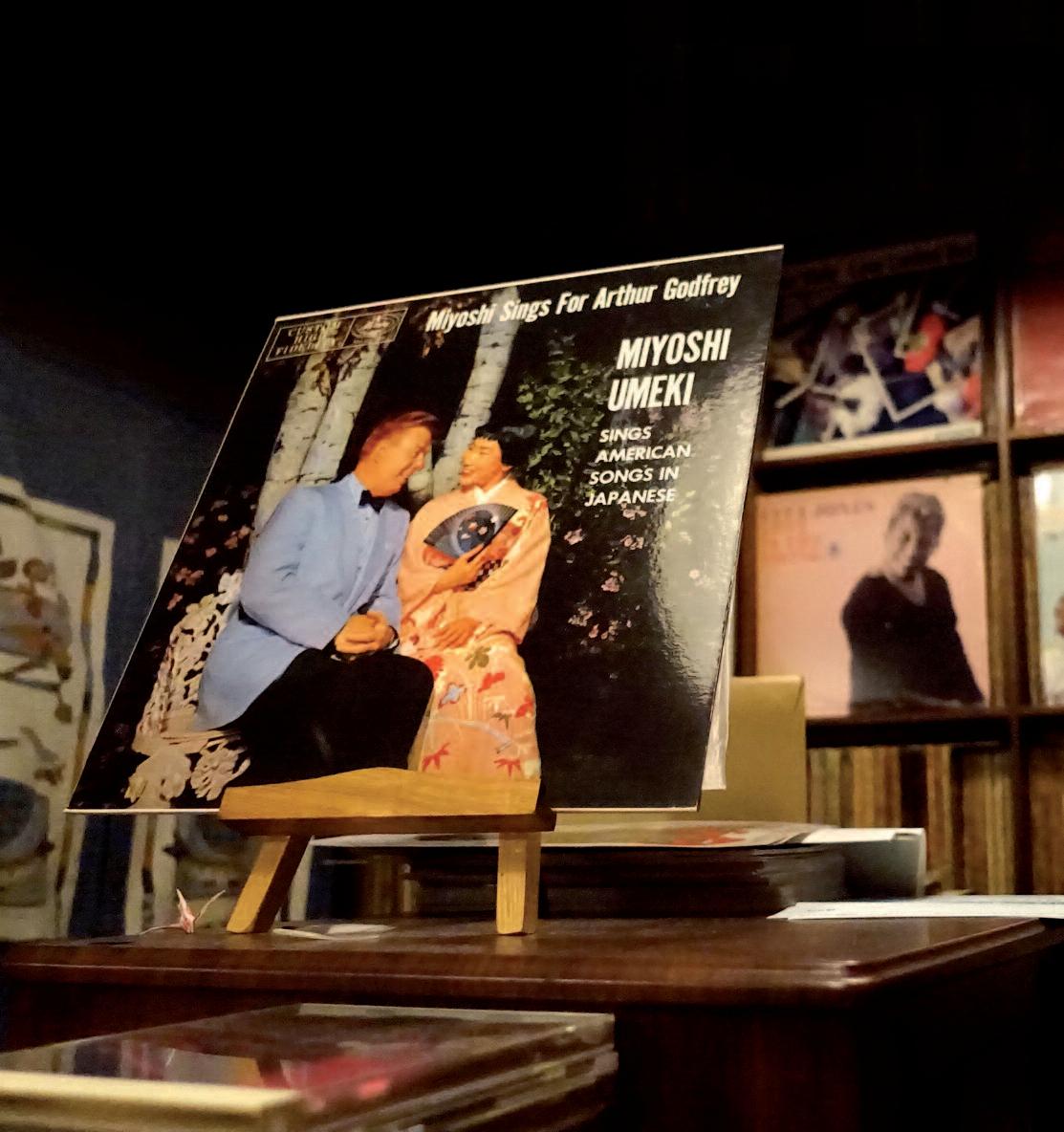
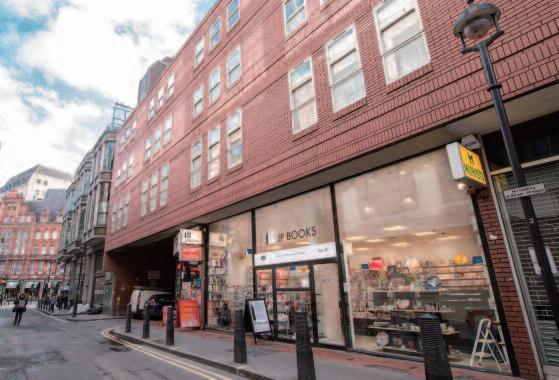


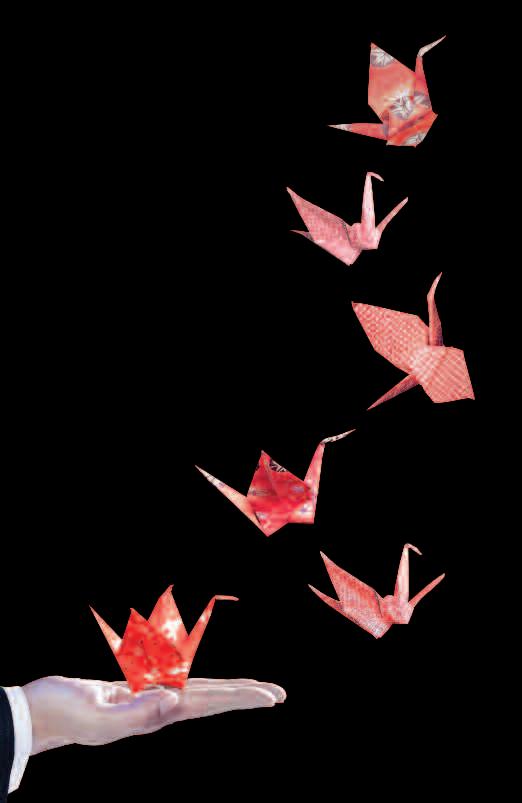









EDITORIAL Let’s jazz!

Four years ago
o u r N o v e mber 2012 issue f e a t u r e d t h e
















Four years ago
o u r N o v e mber 2012 issue f e a t u r e d t h e
i l l u s t r a t i n g how interested the Japanese are in music in general, but we had no intention of focusing on just one musical genre. So, for our first issue of 2016, we have chosen to showcase another style of music that many Japanese enjoy: jazz. It’ s no secret that Japan is renowned not only for talented musicians, but also for its clubs, bars and shops where jazz is celebrated Enjoy
THE EDITORIAL TEAM info@zoomjapan info
There have been diplomatic relations between japan and Belgium for 150 years on the 1st of august 1866 the two countries signed their first bilateral treaty, and to celebrate this anniversary King philipp will travel to japan in october and prime minister abe shinzo will visit Belgium.

Although baseball is still very popular in Japan, football is gaining traction, especially among the younger generation. On a beautiful sunny morning in December 2015, a game is taking place on a football field provided for the residents in this central district of the capital They can hire it for 7,000 yen (£40) an hour Quite a hefty price, but it doesn’t seem to put these football enthusiasts off
with a record 19.7 million visitors in 2015, japan reached the goal set by the government for 2020 with 5 years to spare. The most numerous nationalities were Chinese (4 9 million), Koreans (4 million) and Taiwanese (3.6 million). This is a financial godsend for the country, as tourism is now as large a part of the economy as the manufacture of car parts or semi-conductors.

EXCHANGE
japanese tourists have stayed away from paris following the attacks on the 13th of November that plunged the French capital into mourning. japan airlines saw a 40% drop in air passengers and decided to suspend flights between Tokyo and paris from Narita airport until the 15th of march. However, services between Haneda and Roissy-Charles-de-Gaulle remain unchanged.






Severely damaged by the tsunami, this small coastal city is regaining strength and hope for the future.
In Onagawa, a city that was nearly completely destroyed by the earthquake in March 2011, rebuilding projects were led in a joint effort by residents, local businesses and the council, taking “Rebuilding our city for the next thousand years ” as their motto. In March 2015, after the reconstruction of the Ishinomaki railway line, the first phase of this plan was put into action with the grand opening of Onagawa station, which also houses a spa. Then, on the 23rd of December a new milestone was reached when the Seapalier Onagawa shopping centre was opened, its name being formed from the English words ‘ sea ’ , ‘pal’ and ‘pier’. This new arcade is located in the shopping area close to the station and it’s notable that new independent shops have also started to appear nearby The speed of recovery, which is the result of the council’s collaboration with the private sector, has drawn the attention other cities, so much so that this neighbourhood has become a model for redevelopment
On the morning of the 21st of March 2015, the first train arrived in Onagawa station since the re-opening of the segment between Urashuku and

In the months following the earthquake of the 11th of March 2011, Ishinomaki Hibi Shimbun’s team posted a handwritten message on its front
handwritten message has taken its place: Fukkatsu Ishinomaki (To the Rebirth of Ishinomaki)
It’s a message of hope If you wish to help this newspaper, you can subscribe to its electronic version for 1,000 yen (£6) per month: https://newsmediastand.com/nms/N0120.do?co mmand=enter&mediaId=2301


Onagawa. Most of the railway line had been destroyed and abandoned after the earthquake, so several festivities were organised to celebrate the event, including the opening of the Yupoppo spa located within the station building itself. Previously, the spa was situated nearer the sea Designed by architect Ban Shigeru, it’s a two-storey timber and concrete building with a very unusual roof in the shape of a seagull. The railway itself is at ground floor level, with the bathhouse on the first and there is an amazing panoramic view from the second floor terrace overlooking Onagawa Bay Business in the nearby shopping districts surrounding the new station has picked up, symbolising the recovery Last summer, a shop for electrical goods opened followed by other retailers, much to the satisfaction of shoppers. There is also a new pedestrianised street called the Promenade that runs from the station to where the new Seapalpier Ona-
gawa shopping centre has been built. The centre itself is made up of six one-storey high buildings over a total area of 2,300 square metres, grouping together 27 different shops Among the proprietors are shopkeepers who had run businesses in the area before the earthquake, and others who opened their business after the earthquake and came from other prefectures to help rebuild the city Finally, the Onagawa Exchange Centre was opened on the 23rd of December, containing a music studio where the inauguration ceremony for the new shopping district took place
During the celebration, mayor Suda Yoshiaki recalled that “shopkeepers had the courage to overcome the harsh conditions they faced and to rise above the sadness and hopelessness. With the new shopping centre and the Exchange Centre, the whole town is starting to recover “Let’s do it, Inagawa!” is the motto that encourages us to pursue



our goals" A little later, two school children officially opened the shopping centre. “Despite the tsunami, we are all still alive We are here to demonstrate our determination that our city will flourish for a long time to come For a better tomorrow, let’s ring the bells of hope,” they declared. The bells then rang out three times before the city representatives finally cut the ribbon to mark the grand opening
In all the shops, shopkeepers could be seen chatting happily with residents Before the earthquake Aihara Yoshikatsu, a greengrocer, used to work in the Nakadori shopping district close to the railway station. He has re-opened his shop next to the new shopping centre and station, hoping that “the new district will be appreciated by locals and tourists alike" Not only are there former shopkeepers from the district, but also new, younger people who have come to try their luck by opening a cafe or a bar Before the earthquake it was usually only the older generation who were involved in neighbourhood activities, but according to Aihara “for the first time, it’s young people who are suggesting new projects We’re very
happy to see that different generations are all involved in the reconstruction. It proves that cooperation between people can breathe new life into our city" Following the grand opening, many share a desire to reach out to tourists This is definitely the case for Suzuki Chiaki, a florist who runs the Flower Shop Hanatomo Before the disaster she only sold flowers, but nowadays she has a wider range of products and wants to start an aromatic candle-making workshop to attract tourists “By deciding to re-open my shop here, I’m doing my best to encourage the city to come alive again,” she says, while stressing that it is important that commercial activities must also develop in other parts of the city rather than all concentrating on the same area
Onagawa's population has fallen from 10,000 to 6,000, but despite these sad statistics, reconstruction continues to make headway in helping rebuild the whole city A vision for the future is emerging, with young people starting to plan on “staying” and “continuing to live here". The real task of reconstruction starts here and now

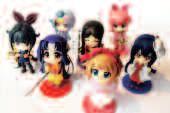

Jazz music remains a a vibrant symbol of freedom in the Land of the Rising Sun, where it is still greatly appreciated.
one of the clichés about Japan is the idea that the Land of the Rising Sun is a country of imitators. It’s been said about cars, cameras and even culture, especially concerning music Some have claimed that though the Japanese display remarkable technique and can play as well as any of the best western artists, they lack that little something that makes all the difference. Supposedly, this failing is even more apparent in jazz If these spiteful opinions were taken seriously, it would amount to saying that Japanese musicians lack the sensitivity to create music capable of moving an audience No doubt the people who say such things have never had the opportunity to listen to Watanabe Sadao who, at 80 years of age, can still entrance a whole room with his saxophone, and whose performing skill has long been recognized by the best American jazz players They have probably never
heard Uehara Hiromi (See page 9) or the great Akiyoshi Toshiko whose graceful and powerful piano playing transports her audience to another world. They have missed out on the pianist Onishi Junko, or the very young alto-saxophonist Terakubo Erena (see page 9) who can both light up a room with their talent. This list could extend to many more Japanese musicians who have taken jazz to new and extraordinary heights
This plethora of talent has been enabled by the prevalent attitude towards jazz music in Japan, which is more positive than almost anywhere else. The jazz clubs of Saint-Germain have disappeared, remembered only in the fading memories of an older generation, whereas on the Japanese archipelago, jazz is a reality that people experience on a daily basis Of course, as in other countries, jazz is in decline All the same, it still remains popular, its flame kept alive by the many small bars where it is unconceivable for whisky or beer to be served without having some good music to listen to Jazz is also associated with a certain freedom of behaviour
that the Japanese (especially in the cities) managed to adopt in the late 1920s, before the military brought it to an end when they came to see it as a dangerous expression of dissidence. However, jazz found favour again after the end of the war and inspired a whole new generation of Japanese people Murakami Haruki is one such person. He was first introduced to jazz in 1964 and it was a revelation for him “I asked myself how I could transpose this music into writing That’s how I shaped my style,” he would write in the New York Times in 2007. And for those who enjoy literature, there’s no doubt whatsoever that the novelist writes his books as he would play a piece of jazz The feeling of freedom he expresses in his books is the same one you experience when listening to Japanese jazz artists, coming from a unique ethos of Jazz music that can ’ t be found anywhere else That’s how they can play music that’s authentic and resembles no other, no matter what a few spiteful people might say - people who are also likely to be tone deaf
GABRIEL BERNARD
To experience the Japanese enthusiasm for jazz, one only needs to pay a short visit to Chigusa jazz cafe.
If you find yourself in the Tokyo/Yokohama area and want to soak up some of the local jazz atmosphere, you can choose from among many dedicated bars, cafes and live venues, each one with its own distinct character However, no place makes fans’ hearts beat faster than Chigusa, Japan’s oldest and arguably most famous jazz cafe
Located just a few minutes west of Sakuragicho Station, near the port of Yokohama, the red brick building is easily recognizable thanks to its colourful second-floor graffiti and the portrait of a smiling bespectacled men next to the cafe’s name “That’s Yoshida Mamoru,” says Yusa Masataka, who heads the Chigusa-kai (Chigusa Association) that rescued the cafe in 2012
Yoshida is considered one of the patron saints of jazz culture in Japan He first opened Chigusa in 1933 when, despite the increasingly anti-western attitude of the authoritarian regime, American culture was still popular “In fewer than ten years Yoshida accumulated a 6,500-strong record collection”, Yusa says, “ no small feat when you consider how expensive and difficult it was to buy jazz records at the time Imported American records could be five or six times more expensive than an average record made in Japan". Unfortunately, the place was closed down in 1941 by the military regime, and one year later Yoshida was drafted into the army When he came back from the war he discovered that his cafe had been destroyed by the American air raids, together with his prized record collection “So he just started all over again from scratch,” Yusa says. “Yoshida was much more than just a jazz lover. He devoted all his life to his favourite music He never married and used to live with his sister Takako in a small place next to the cafe He really wanted to nurture the local jazz scene and create a place where both fans and musicians could share their passion Many musicians actually came here to learn new tunes ” Yusa shows me a signed portrait photo of internationally renowned pianist and band leader Akiyoshi Toshiko, which takes pride of place between the cafe’s two massive speakers “Yoshida told me that Ms Akiyoshi (a rarity among the mostly male customers) used to spend hours here,” Yusa says. “She particularly liked Bud Powell, and would ask Yoshida to play certain passages again and again, apparently trying to memorize them".
If rebuilding the Chigusa cafe itself was not particularly difficult, getting hold of the records was a much harder task Luckily for Yoshida, the allied
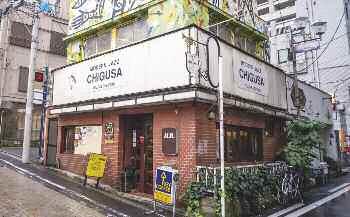
occupation of the country (1945-1952) brought many American soldiers to Japan, and it was these soldiers who came to the rescue “Yoshida and his sister were very friendly, and he could actually speak English quite well,” Yusa says “For many American GIs who were stationed at the nearby bases, Chigusa quickly became a home from home Probably the only thing they didn’t like was their Japanese-style toilet (laughs) Many jazz records at the time were produced by US labels that were only available to the American armed forces Soldiers were supposed to play them only inside their bases, but Yoshida convinced some of them to buy copies for him That’s how he started to rebuild his collection”. Yusa’s love affair with Chigusa goes back to the early 1960s when he began to hang out at the cafe as a junior high school student. Yoshida continued to run Chigusa until he died in 1994, at the age of 81 His sister kept the cafe open for 13 more years, but at the turn of the century she began to have health problems and in 2007 she gave in to the property developers and sold the building. “By then I had already started the Chigusa-kai in order to ease the burden on Takako-san of running the cafe”, Yusa says, “but in the end we could only do so much. The property developer was very insistent because they wanted to build a block of flats in the neighbourhood and, one by one, all the shops around Chigusa sold up. The day Chigusa was demolished was a very sad day for everybody”. However, that wasn ’ t the end for the two storey jazz cafe Two years later, Chigusa-kai rented a public facility in the same district and for nine days ran a temporary cafe that attracted 2,500 old and new fans “The unexpected success of that brief experience gave us new energy and inspired us to
resurrect the cafe”, Yusa says “We were lucky enough to find support from other shops in the Noge district, and eventually even the City of Yokohama helped us rent a new place"
The new Chigusa is situated not far from its original location in Noge, and in many respects it has retained the same look and feel as the original premises
The wooden chairs have been replaced by about 18-20 comfortable seats and the new audio system now features two turntables behind a glass partition on the counter, but the LP album covers and framed photos are still on display – such American icons as Duke Ellington and Charles Mingus, but even a few Japanese musicians like Akiyoshi and trumpet great Hino Terumasa On the left of the giant speakers there is also a piano (the cafe regularly organizes live concerts) and a well-stocked library, while the right side is mostly taken up with the impressive record collection featuring swing and other jazz classics from the 1930s and 1940s, big band music, be-bop and other modern jazz genres, including more recent works. Everything is carefully written down in the multi-volume catalogue from which everybody can make a request While the atmosphere is quite relaxed, most customers don’t seem to be very talkative as they prefer just to listen to the music while drinking coffee, juice or maybe something stronger like beer, whisky or shochu (but only after 18.00). JEAN DEROME
DeTaILs
CHIGusa 2-94 Noge-cho, Naka-ku, Yokohama Tel. 045-315-2006
open 12.00-22.00 (Tue-sat), 12.00-18.00 (sun). Closed on monday.
http://noge-chigusa com/jazz
This French jazzman found not only inspiration in the archipelago, but also the desire to share his musical knowledge.
For over 28 years, Dominique Fillon, pianist and colourful jazz composer, has enchanted us with his music inspired by African and Brazilian rhythms Yet it’s in Japan, a world away from those hot climes, that he chose to launch his new musical project. Born on the 25th of February 1968 in Le Mans, Dominique fell head over heels for this country in 2009 He returns regularly to conduct different professional projects Now he shares his vision with Zoom Japan and gives us the key to understanding why the Japanese are particularly drawn to jazz
Tell us how you discovered Japan.
Dominique Fillon: I came with my wife, Akemi a t t h e e n d o f M a r c h 2 0 0 9 , a t t h e t i m e o f t h e sakura blossom, to visit her family in Omiya It was so cold in their traditional Japanese house (except for the kitchen, which was too hot) that we left for Tokyo And that’s where I realized that jazz was everywhere: in the shops, offices Miles Davies on trumpet. No one else listens to jazz as much as the Japanese From the very beginning, I was touched by the people, how much they smiled There is a real culture of hospitality here. No matter where you go, people are happy to welcome you, something that you don’t experience anywhere else in the world – especially not in France (laughs)
In 2011 after the Tohoku earthquake, you and your family became involved in helping victims What did you do?
D. F.: The same morning the news of the tragedy reached France, Akemi - a professional violinist - wrote a piece of music in honour of the victims, called Sakura 2011. “The notes represent all the lives that have flown away, ” she told me. It was very moving Then, a month later, when I was leaving the stage after a performance, a businessman came up to me and asked if I would like to organize a fundraising concert in Tokyo. He told me to choose a cause, and I wanted to support musicians, as we were musicians ourselves We d e c i d e d t o b u y n e w i n s t r u m e n t s f o r a s c h o o l from this region, which had lost everything. On the night of the concert, many local people came, all very dignified Nearly all the women w e r e w e a r i n g t h e i r f
kimono) One of the young girls from Fukushima School came up on stage to receive a symbolic violin We raised more than £30,000 for

the instruments What an incredible moment!
Jazz is much appreciated in Japan How would you explain the Japanese affinity for this kind of music, and particularly for your own music?
D F : I don’t play the type of jazz they’re used to listening to When the Japanese talk about jazz, they are thinking of Miles Davis and other f
without really understanding it They appreciate
understanding its history They don’t necessarily know that this type of music is improvised, for
necessarily because they like jazz. It goes beyond that My music pleases them because of the fee-
This means I can play anything I want! (laughs)
W h a t i s i t a b o u t J a p a n t h a t i n s p i r e s y o u r music?
D. F.: Since my childhood, I have repeated all the sounds that I hear I am very sensitive to the m e l o d y o f t h e J a p
T
always new sounds to be heard, and because my b r a i n i s w i r e d i n a p a r t i c u l a r w a y , l i k e a h a r d drive, it makes connections the sounds of the l a n g u a g e i n s p i r e s m e b y r e m i n d i n g m e o f t h e
sound of Bambara or Swahili
I w a s p a r t i c u l a r l y m o v e d b y t h e M e i j i S h i n t o
S h r i n e i n T o k y o , c l o s e t o O m o t e
o S o I named one of my pieces after it, keeping in mind this place and the magnificent park it is set in Above all was the elegance of the sound – Omotesando It’s a word that bounces, it is very exotic and almost sounds African.
The creative process was very different for Abounayo - “Watch out!” in Japanese - a track from m y l a s t a l b u m , B o r n i n 6 8 ( C r y s t a l R e
, that came out in June 2014. I started to compose the song using the sound of these soft, wet words a
I repeated it several times into the microphone.
Your music is heavily influenced by Brazilian m u s
appear to be very open and communicative… So what was it about Japan that seduced you, a country where there are a lot of restrictions and where discretion is ingrained?
D. F.: I am even more of an extrovert in Japan, where I have no boundaries. I enjoy the way the Japanese regard me, it encourages me When you get the opportunity to work together, they are the first to want to share their feelings. Even if they are discrete and never do so straight away The complete opposite of Americans! However, once the door is open, they are very outgoing
How do Japanese artists tackle improvisation, how do they go about it? Do you have any stories to tell us?
D . F . : I n S e p t e m b e r 2 0 1 5 I d i d a s e r i e s o f
c o n c e r t s a t t h e F r e n c h I n s t i t u t e o f T o k y o A young Japanese saxophonist, Sarah Maeda, was invited to join our trio
I f S a r a h h a d n ' t k n o w n h o w t o i m p r o v i s e , I wouldn’t have invited her We did a jazz concert full of improvisation! Jazz is instantaneous comp o s i t i o n w i t h i n a g i v e n f r a m e w o r k F i r s t t h e players lay down a musical theme, then extemporize around it It makes for a complex perform a n c e , c o m p o s i n g o n t h e s p o t i n f r o n t o f a n audience Sarah did very well
S o o n y o u a r e o r g a n i z i n g a p e r f o r m a n c e i n France bringing together jazz and rakugo. How do you expect to combine these two art forms?
D F : Have you heard about the themed evenings called Wine and Jazz organized in the castles of Bordeaux? It’s the same concept. To listen to jazz one needs a certain sophistication It’s an art form that requires a degree of attention, and you appreciate it more if you ’ re very familiar with it. I believe it’s the same for rakugo. At first, this comedy storytelling dating back to the Edo era is, frankly, rather surprising then you discern s o m e t h i n g d e l i c a t e a n d e l e g a n t b e h i n d t h o s e apparently simple comic tales. I wanted to organize an event that brings together the qualities they both share It’s a first!
W h a t e l s e a r e y o u c u r r e n t l y w o r k i n g o n i n Europe and Japan?
D F : I continue to perform concerts in France o r e l s e w h e r e , e i t h e r s o l o o r w i t h m y t r i o I g o where I’m invited. I’ll be performing in Kyoto and Tokyo in February But coaching artists in J a p a n i s t h e p r o j e c t c l o s e s t t o m y h e a r t a t t h e moment.
As a professional musician for the past 28 years, I’ve played with and directed artists in many different contexts all over the world I’ve come to a point in my life where I want to give something back, more than I want to perform. Usually, in Japan, you ’ re able to bring something n e w t o t h e t a b l e I o f f e r J a p a n e s e m u s i c i a n s “know-how” that has nothing to do with a specific kind of music or style. To be a professional musician means knowing how to become very p r o fi c i e n t a t b r i n g i n g o r d e r t o a m u l t i t u d e o f details. I know how to do that and enjoy passing that skill on. I help artists make progress in what they want to do
The first people I coached in Tokyo studios have a l r e a d y t h a n k e d m e f o r t h e p r o g r e s s t h e y ’ v e m a d e W i t h m y h e l p , t h e i r i n s t r u m e n t s h a v e finally become an extension of their minds!
INTERVIEW BY RAPHAÈLE LESORT
Of course, jazz is not just a man ’ s world, so here is an overview of the most renowned Japanese women involved in the genre.
when one thinks of music, women and Japan together, most of the time it’s the names of Kyary Pamyu Pamyu or the members of AKB 48 that come to mind, stars of Cool Japan whose names you ’ re probably tired of hearing, especially as they don’t seem to be inspired much by actual music. To write off the feminine music scene as just these young women who dominate the sales of discs in the archipelago is, of course, a little over simplistic There are many female musicians who deserve to be in the spotlight for their incredible talent Among them, a few are forging a path in the world of jazz, and they are starting to gain recognition One can mention 20 year old Terakubo Erena whose talent for the alto saxophone caught the famous Watanabe Sadao’s attention back when she was still a teenager Born in Hokkaido, her nickname is North Bird, also the title of her first album (2010), and she has worked with legends such as Kenny Barron and Ron Carter on her last two albums: New York Attitude (2012) and Burkina (2013). Her style takes us to another plane, light and relaxing, perfectly suited to when you ’ re looking forward to a restful evening after a busy day
Pianist Uehara Hiromi however, is much less "calm" There’s no doubt she’s one of the most talented musicians of her generation, and her international success is confirmation enough of the quality of her performances. Hiromi, which is her stage
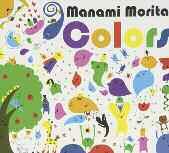
name, also owes her popularity to her concerts, during which she gives off such energy that no-one is left unmoved. She has recorded a dozen albums that are all good to listen to when you ’ re in need of a pick-me-up
Another pianist, Morita Manami, has made a breakthrough in these last few years, thanks to her desire to experiment Her first album, Colors, released in 2009, received immediate praise from critics, and she became well-known outside jazz circles when one of her pieces was chosen by TV channel Asahi for the opening credits of their news broadcast The great sensitivity she displays in her latest release; When Skies Are Grey (2012), somehow echoes masters like Brad Meldhau.With these examples, it’s no longer possible to just mention the insipid ‘made in Japan’ idol pop stars when you are asked about music and women in Japan G. B.

The owner of a certain Jazz bar in Fukuoka entices his customers in with a selection of the best black American jazz artists.
In the Tenjin district, across from Nakasu Island where the Fukuoka Jazz festival takes place every year, a branch of the river leads you to a red shopfront where the letters JAB, Jazz and Coffee hang over the door Only one other sign is displayed: a telephone with a red line through it. This is a rare place, which remains completely true to itself and is dedicated to presenting a selection of music chosen by the owner and his clientele We go in. Amplified music is streaming out from the 40 year old speakers and the atmosphere is cosy You can even smoke a cigarette at the counter The barman turns around and chooses a record from one of the shelves that cover the walls. There are a few tables, a dozen stools at the counter, and behind it stands Akiba Masaru He pours out the coffee, shochu (distilled alcohol from sweet potato), whisky or beer, but you don’t come here for what the menu has to offer, it is very much about the music This is how Akiba found the venue when he first came in, back when he was a student studying heritage conservation. He would happily just sit drinking coffee and listen along The “boss”, Hanyu Yunoshin, opened the bar in 1971 This fervent music lover and defender of black American jazz gathered a collection of more than two thousand records, some of them true gems For example he had a record by Duke Ellington and Ella Fitzgerald with both their signatures The bar could have disappeared when its owner died in 2000, but Mr. Akiba decided to get behind the counter and now takes care of it every day of the week from midday to midnight, except on Sundays. He gave up the idea of finding work in the field he trained for and dedicates his life to JAB, promising to “ preserve the style and spirit of this place until the end" Jazz and the city of Fukuoka first came together when the American army was stationed here. “We were listening to it even before the Americans arrived,” he assures us,
LoCaTeD 150 meTRes from Tenjin-minami railway station, jaB will welcome you to the beat of the best black american jazz artists 5-2-13 watanabedori, Chuo-ku, Fukuoka Tel. 092-712-7413
THe NaKasu jazz FesTIvaL has taken place every september since 2009. a dozen musicians, for the most part japanese, perform on stage from 5pm to 11pm over two days To get there, you just need to take the Kuko subway to Nakasu Kawabata station performances are free and open to the public.
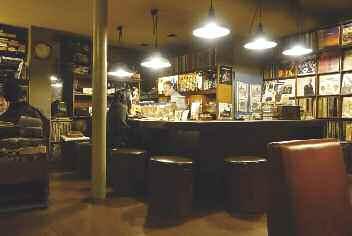
but the arrival of the GIs meant more venues dedicated to this kind of music opened Back then there was no other kind of entertainment. It was either the cinema or a jazz bar The impact is still felt today Nowadays, with thirty odd seats, he continues to play the black jazz classics, following the example of the former owner. “You won ’ t hear Keith Jarret here,” Akiba says ironically He keeps an eye on the customers from behind the counter, slowly looking through the vinyl records in his library covering the walls to select the record that fits the moment or the “client’s style” As a soon as we stepped inside he put on “Under Paris Skies” by the Freddie Reb trio, a recording that dates back to 1971, which he chose for us when he heard our French accents It gives him great pleasure, as he modestly admits, to watch his patrons ’ reaction. He sets the album jacket on an easel standing at the end of the counter and, satisfied with our response, he returns to his wall of vinyl; only he understands the order in which they are arranged. There’s a corner of a shelf dedicated to the French people who visit his bar A man of few words, we encourage Akiba to talk and he ends up telling us about how jazz has changed in Fukuoka over the last forty years. He saw his fellow jazz bar competitor and friend close his restaurant, the New Combo, a dozen or so years ago Apart from Riverside, JAB is one of the last bars in the capital of Kyushu to operate in this way, where a client can choose a record to be played He’s not a big fan of the usual classic records people ask to hear, but he respects their
choice While telling us this, he lifts the needle and places it on the grooves of a Michel Sardaby T r i o r e c o r d i n g . A r a r e g e m : N i g h t C a p ’
album from Martinique with Percy Heath on bass and Connie Kay on drums It’s clearly one of his favourites He plays two numbers from t h e
h e well over meter high JBL speakers “We changed the tweeters twenty years ago The sound was too high and hurt one ’ s head,” he tells us It is soon almost midnight and we discover his incredible collection from the catalogue of producer Henri Debs, who popularized zouk (Creole music) and whose jazz artists travelled to Japan. “There are a dozen jazz bars in Fukuoka, but they change hands too often,” he says regretfully As far as the musicians are concerned, he thinks they are “ too much about technique, greed and business". It’s been ten years since he’s organized a gig in his fifty square metre bar “Records are made to be listened to, ” he says So he bends over backwards to please his music loving patrons; that’s why JAB is still here today. We ask about the last record he bought. He hesitates, then goes to fetch Miyoshi Umeki’s album of American songs sung in Japanese “She died at 90 years of age in a retirement home for artists in the United States. She was one of Japan’s most beautiful voices,” he insists It’s closing time soon, and as the suave and soulful voice of the Japanese singer fills the bar, we ask him if he has a website. He laughs and tells us you can ’ t find him on the Internet
DOMINIQUE LERAY & RITSUKO KOGA
This Japanese city port is famous for its jazz music. Here are some tried and tested venues.
The Sakuragicho district on the Yokohama waterfront is very popular with sightseers Most people visit the shopping malls and amusement park in the Minato Mirai 21 area to the east of Sakuragicho Station, as well as the Landmark Tower (the second tallest building in Japan) On the ‘ wrong ’ side of the station, in a place called Noge hill, you can visit a small but interesting zoo, free of charge But today we are paying a visit to a different kind of animal: the cool cats who enjoy jazz music
While not far from the glitzy tourist area, the Noge neighbourhood has retained the rough vibe of the postwar years, when jazz cafe culture blossomed in Japan Its narrow streets are full of bars, small restaurants and other shops, and a comparatively high number of jazz clubs – including Jazz Cafe Chigusa, covered earlier in this issue. While most people now prefer to listen to their favourite records at home, Noge and the districts nearby still have a loyal jazz community that enjoys spending lazy afternoons and exciting nights in their favourite cafe as a kind of social ritual Here are a few notable places you may want to check out yourself
The first jazz spot you find when you leave Sakuragicho Station is also one of the best Opened in 1956, Downbeat is a classic cafe, but it’s only recommended to hardcore fans as the music coming out of the speakers is usually so loud that it’s almost

impossible to have a conversation It’s a comparatively large place, seating about 30 people in the main area and eight more at the slightly quieter counter. Low lights, old posters, photos and newspaper clippings glued to the peeling walls make for a great old-time atmosphere The music selection is varied and, apparently, the 17th of every month is John Coltrane Day The menu features coffee, tea, a few simple dishes and lots of booze including an impressive lineup of whiskies
2F Miyamoto Bldg, 1-43 Hanasakicho, Naka-Ku 045-241-6167
Open 16 00-23 30 Closed on Sunday www yokohama-downbeat com
Jazz Spot Dolphy
First opened in 1980, this venue manages to seat about 50 people Highly praised by both visiting musicians and customers for its great acoustics and friendly atmosphere, this bar has a busy live schedule featuring everything from vocal jazz to free experimental jazz Among the regulars are singer Nakamoto Mari, pianist Itabashi Fumio, saxophonist Sakata Akira and guitarist Akiyama Kazumasa They even have jam sessions on the fourth Monday of the month Lots of food and an especially huge drinks menu are perfect for nighthawks who enjoy the bar’s late closing time.
2F Dai-Ichi Nishimura Bldg, 2-17-4 Miyagawacho, Naka-ku
045-261-4542
Open daily 18:30-1:00 (Mon-Thu), 18.30-2.00 (Fri-Sat), 18 00-1 00 (Sun and public holidays) www dolphy-jazzspot com
Four more jazz venues can be found between Sakuragicho and Kannai Stations
Jazz Spot ADLIB
Another venerable jazz club in this old port area, ADLIB is a no-frills place where you can listen to records in the afternoon or at tea-time, and has a bar with a live performance or jam session every night.
2F 3-9 Yoshidamachi, Naka-ku 045-262-8111
Open 17 00-23 00 (Tue-Fri), 13 00-23 00 (Sat), 13 00-21 00 (Sun & public holidays) Closed on Mondays. www jazz-adlib info
Located next to ADLIB, Little John has been in business since 1981, and with only 20 seats, it’s one of the smallest jazz venues in the area It features between six and ten live performances every month, while on the other days it functions as a regular bar. You can make requests from their extensive collection of jazz and blues records while enjoying the oldschool vibe. The only problem with Little John is its erratic opening times, so it’s better to call in advance before paying a visit
2F Dai-Ni Kyodo Bldg, 3-11 Yoshidamachi, Nakaku. 045-251-2131
Open 19:00-24:00 Closed on Sundays and public holidays http://ameblo jp/jazz-little-john
Despite its name (it means “The Drunken Count”), this basement bar has a lot of style, with sofas, big mirrors and soft lights It differs from other local venues as it is devoted exclusively to vocal jazz, so it definitely has a mellower, more relaxed vibe. They have live groups almost every day, with three sets between 19 30 and 23 10 On average the entry charge is around 3,000 yen and they serve food too.
B1F 2-5 Suehirocho, Naka-ku 045-261-0272
Open 19 00-2 00 (Mon-Sat), 19 00-1 00 (Sat) Closed most Sundays www.yoidorehakusyaku.com
This new addition to the local jazz scene is on the other side of the tracks, not far from the Yokohama baseball stadium, and in many ways it is a little different from the competition For one thing, its wide, well-designed space looks more like an ordinary bar/restaurant. Indeed, the food here is much better than elsewhere and its drinks menu includes wine As a consequence, the clientele isn’t limited to hardcore jazz fans. Even the music selection on offer is wider, covering fusion, funk and bossa nova alongside different jazz styles They have live music every night and the cover charge averages 3,000 yen.
6-76 Sumiyoshicho, Naka-ku 045-662-5357
Open daily from 19 00 (18 00 on Sat-Sun and public holidays). www yokohama-kamome com
Far removed from the other places covered in this guide, and closer to Ishikawacho station and Chinatown, Minton House has been in business since 1975, and it shows. It’s the ideal place for those who like that nostalgic feeling, and according to many fans this is still the best jazz bar in Yokohama The long bar counter is lined with bottles of whisky and other spirits and the walls are covered with a collage of the usual array of photos and flyers The eclectic record collection features big bands, vocal jazz and any other genre you could wish to listen to.
Hamada Bldg, 276 Yamashita-cho, Naka-ku 045-662-2586
Open daily 11 30-14 00 and 17 00-24 00 (MonThu), 11.30-14.00 and 17.00-2.00 (Fri-Sat), 11 30-14 00 (Sun) http://bar-navi suntory co jp/shop/0456622586/ J D
The world famous musician’s interest in Japan and the connections he forged helped create his legend and international renown.
In front of David Bowie’s childhood home, 39 Stansfield Road, Brixton, London, numerous mourners placed flowers, candles and messages Among them is a message from Kanako, wrapped in plastic to protect it from the rain It starts in English with “Dear David Bowie” before continuing in Japanese “出火吐 暴 威 様 ” Kanako chose to write the name of the musician, who died on the 10th of January 2016 at the age of 69, in Chinese characters, just like the designer Kansai Yamamoto did over 40 years ago on the stage costumes he designed for him “One who vomits fire and violently spits out words” is a near literal translation of the chosen characters used to transcribe the name of the artist who was greatly inspired by Japan at the time
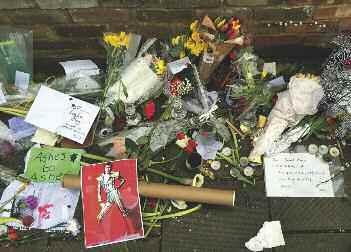

“I think it’s the only place I could live outside England,” he said in an interview published in the British magazine Melody Maker on the 24th of February 1973 He had not yet given up on his Ziggy Stardust persona, which borrowed many elements from a world influenced by Japanese culture. His Aladdin Sane tour ended in London a few months later and, wrapped in his cape with the red and black kanji signalling his interest in the Land of the Rising Sun to the audience, he would announce the end of this important phase in his career At the time, the singer had imagined building an installation in the Japanese archipelago and, although he never did, Japan was a dominant factor in the first few years of his artistic career, up until the start of the 1980s Just like other artists a century before him, David Jones, aka David Bowie, turned to Japanese art as it expressed something new and different to which he aspired He could have made the Gongourt brothers words his own:
“Art is not one, or rather, there is not just one form of art. Japanese art is as great as the Greek’s. And what is Greek art in truth? Beauty in realism No fantasy No dreaming" David Bowie wanted to be free from the artistic shackles of his time On the lookout for new trends before they became fashionable, the future Ziggy Stardust understood that Japan could help him express his creativity and emphasize what was unique about him. The time was right, with this former wartime enemy once again accepted and held in esteem within cultural circles in England, and several exhibitions of Japanese art taking place in the British capital. In the fashion industry, patterns from the Far East were starting to make their way onto the catwalk and bunraku and ka-

buki shows were in the theatres David Bowie was smitten. He took lessons with choreographer Lindsay Kemp, who had been greatly influenced by Japanese dance, music and classical theatre “I taught my approach to Japanese dance, and we would practise to music by Takemitsu Toru,” he recalled There’s no doubt that he helped his student make use of some the elements of this art in his stage shows that turned the music world upside down at the start of the next decade. “I believe he knew nothing about Japanese theatre before we met He knew lots when he left,” the dancer recalled The meeting between David Bowie and Yamamoto Kansai is also crucial, as it underlined the influence of Japan on the artist and gave him the opportunity to assert the sexual ambiguity of his characters At a time when these kinds of experiences were being questioned by a society searching for change, David Bowie drew on Japanese influences, especially from the realm of kabuki, in order to embody characters that called into question the established order in regard to sexuality The onnagata, men who played female characters in the kabuki theatre, fuelled his imagination Yamamoto Kansai worked alongside Bowie and created costumes perfectly tailored to his needs “He had an unusual face He was neither man nor woman Which suited me perfectly as most of my creations were designed for either sex ” , explained the man who provided the singer with some of his most original costumes for his famous tours in 1973 and 1974 Ziggy Stardust is “like some cat from Japan ” sings Bowie in his famous song. Though he abandoned Japanese outfits in 1973, he kept in touch with the Land of the Rising Sun, whose influence continued to permeate his work. He worked on several projects in collaboration with the photographer Sukita Masayoshi, who took some of the best portraits of Bowie Japan was also a source of inspiration for his songs, as the lyrics testify. In Blackout, the fifth track on his album Heroes (1977), he declares that “I'm under Japanese influence/And my ho-
nour ' s at stake" Two years later he mentions the city of Kyoto in Move On, his third song on Lodger The following year, in the song Ashes to Ashes from the album Scary Monsters (And Super Creeps), it’s “Just pictures of Jap girls in synthesis” that seem to haunt him. With this song, he appears to want to close this chapter of his life that is marked by excess, perhaps connected to a search for identity He’d started his career by plunging into the world of Japanese culture and
musician released Let’s Dance, an album not about Japanese girls, but a China Girl. In the following years Bowie's image became more masculine than ever as he cast off all costumes inspired by the Far East He started a world tour during which his fashion became morewesternized, one could say even normal Maybe even a little too normal, according to some Could this explain why the tributes from some of the artist’s biggest fans after he died nearly all refer to his “Japanese”

3 July1973, at the hammersmith Odeon in London, David Bowie wore for the last time the cape with his name transcribed in kanji, designed by Yamamoto Kansai
finished it symbolically with his role as Major Jack Celliers in the film Furyo (Senjo no Merry Christmas, 1983), directed by Oshima Nagisa The ambiguous relationship he has with Captain Yonoi, played by Sakamoto Ryuichi, in many ways recalls the time when David Bowie played with sexual ambiguity using what he had learnt from kabuki But unlike the previous decade, his character, who actually dies in the film, reveals his strength and expresses a turning point in the way he wishes to present himself At the same time Furyo appeared on screen, David Bowie the

phase? Whether they line up in front of the house where he was born, or the mural on Morleys department store in Brixton where a portrait of Aladdin Sane has been painted, this particular period of his career is one that his admirers refer to more than any other as they bring photos and drawings depicting that era We can also understand why Kanako travelled all this way to “ express her gratitude from the bottom of her heart”. “Hontoni arigato gozaimasu,” she writes simply. We share her thoughts



This month I would like to introduce a unique kind of organic roasted green tea made with brown rice, known in japanese as "genmai hojicha", that is made with a method based on using the stalks of the tea plant.
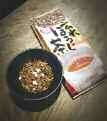
ususally, hojicha (containing only course tea from the second tea crop of the year) and genmaicha (green tea made with brown rice) are treated as distinct varieties, although both contain caffeine. However, in order to cut the caffeine from this special genmai hojicha blend, 31st generation master tea grower shinbara Koutaro, from Kagoshima prefecture in southern Kyushu's famous tea growing region of Chiran, has replaced the course tea component with tea stalks and combined it with brown rice based genmaicha to create a new and unique recipe. as it contains no caffeine, this tea is perfect to drink before bed and can even be enjoyed by those with caffeine allergies, pregnant women or young children.
BIo
eIKo sTaINes
Ceo/owner of es Food Trading, Qualified tea master in the omote-sen-ke & ura-sen-ke traditions produces the highest quality range of matcha and other teas selling at minamoto Kitchoan, partridges and selfridges www esfoodtrading co uk


Since it opened last September, Nanban has offered a unique culinary experience to awaken all our senses.
Nanban is what the Japanese called the “southern barbarians”, westerners who came to the archipelago in the 16th century looking for the treasures that Marco Polo told them could be found there and who, at the same time, wanted to convert the country to Christianity Nanban also refers to an artistic style born out of the European influence on Japanese art, a sort of artistic fusion that can be observed in some of the works held at places like the Nanban Bunkakan in Osaka or at the Municipal Museum in Kobe But Nanban is also a new gourmet venue in Brixton, aptly named since the key concept for the owner is fusion food The American Tim Anderson has, in effect, chosen to create a venue where several different influences are combined This is not limited to the food, but also to the setting, where these delicious and original dishes are served.

Deciding to change the original 1921 exterior of the restaurant as little as possible - the only additions are the words “ ramen ” and “izakaya” written in katakana and hiragana - meaning that a passer by may not immediately be drawn to the place and walk right past without taking the time to have a peak inside For the interior design, Tim Anderson adopted a fusion look, where the spirit of the typical Japanese ramen restaurant is combined with the atmosphere of a New York bar with exposed brick walls The choice is, of course, very deliberate and consistent, as the chef, a winner of Master Chef, wanted to create a hybrid effect different from the many Japanese restaurants that rely on faux Japanese decoration
The chef goes even further with a cuisine that respects the founding rules of Japanese gastronomy He adds his own personal touch, highlighting dishes that would be nothing special in other restaurants The care given to the presentation is a sure sign of Tim Anderson’s dedication to serving a cuisine that will awaken all your senses, with the first of these being sight Before even tasting the food, you’ll be devouring the dish with your eyes, a great way to start the meal, especially when the staff, smiling and attentive, offer the patrons the different menus as soon as they are seated Going through the menu is easy, as there are only a dozen dishes The concept is to change the menu every month to follow the changing seasons, making sure not to fall into a routine and continually surprise curious customers with new dishes to discover
Tim Anderson has been influenced by his trips to Japan, and in particular his keen interest in Kyushu Island, where the “southern barbarians” first disembarked, and has created a menu inspired by this beautiful region His Kumamoto ramen (£11) or his Miyazaki ramen (£11) are really worth trying, as well as his Sasebo Burger (£12) This last dish is a reminder that Sasebo, an American Navy base, has a number of excellent burger restaurants with a Japanese twist Nanban is a delightful place where you can enjoy excellent Japanese and British beers. With the concept of fusion at every level, Nanban is a name that suits this venue down to the ground However, there is nothing barbarous about it It’s a work of art
ODAIRA NAMIHEI
m-F 12 00 1500, 18 00 23 00 sat 12 00 23 00 / sun 12 00 22 00 http://www nanban co uk/ ReFeReNCe
426 Coldharbour lane, brixton sw9 8lF tel. 020 7346 0098
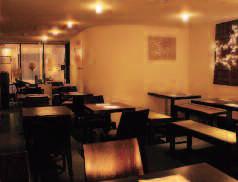













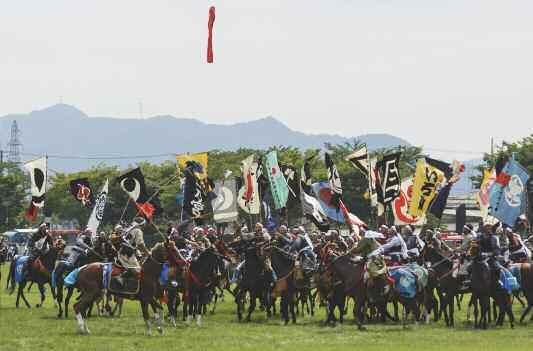
Just like the Siena Palio, Fukushima prefecture's Soma Nomaoi is an event where riders can represent their region with pride.
The sun is rising over the Nakamura Shrine and Ito Kazuhiko is hard at work in the stables where he is preparing his horse for the annual Soma Nomaoi races With velvet pompoms, a black and gold leather saddle blanket and


black lacquered stirrups, nothing is too extravagant for this event that celebrates 1,000 years of the history of the Soma samurai clan and the city of the same name in Fukushima Prefecture. Translated literally as the Soma wild horse chase, the origins of the Nomaoi date back to the Sengoku era (mid 15th century – end 16th century) when samurai would train secretly by capturing herds of wild horses as offerings to the Shinto gods “If you ’ ve seen the movie The Last Samurai, you know that
those men were part of clan Soma!” Kazuhiko exclaims with pride as he strokes his horse’s rump A native of the port city of Soma, he’s 31 years old and is riding at the great Shinki Sodatsuen race course for the first time He been training for this event for over 10 years Far in the distance the cicadas begin their song as the sun rises. Soon the heat will be unbearable, but for the time being, the shrine is still a sanctuary of peace where the riders can bond with their steads far away from the






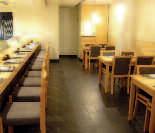
crowd “We have prayed to the gods of the shrine to ensure that this festival will recapture all its former splendour, and to ensure that Soma recovers quickly,” explains Takahashi Makoto, who oversees the Nomaoi in the neighbouring city of MinamiSoma. The triple disaster on the 11th of March 2011 has left permanent scars across this coastal region, whose livelihood used to be fishing The nuclear accident at Fukushima Dai-ichi, only 20km from here, forced 160,000 residents to leave the nearby villages, which were designated as exclusions zones Many have found refuge in Soma and Minami-Soma and still live in temporary housing there. However, even in 2011, the local people did not miss out on celebrating this colourful annual event
Starting the day before with a procession of riders in Soma, the festival attracts hundreds of people from early morning The growing crowd then heads for the Ota Shrine in Minami-Soma for the start of another procession The Nomaoi festival recreates three samurai warrior rituals over a period of three days and takes place around the three local shrines of Nakamura, Ota and Odaka In this splendid landscape of rice-fields surrounded by mountains, the cavalcade solemnly advances to the rhythm of drums and conch horns, what could be a perfect replica of a painting from the Middle Ages Behind the commander-in-chief, monks, palanquin bearers, grooms and warriors, but also children dressed up as princes, all parade in an atmosphere both majestic and calm The riders astride their proud mounts wave and laugh with the onlookers who gather alongside the rice-fields, fanning themselves as they curse the heat Like all
FRom ToKYo, take the Tohoku shinkansen to sendai, taking about two hours. Then change to the joban line to Haranomachi, 100km to the south. Finally, there is a free shuttle service to the different sites of the festival. The 2016 festival takes place between the 30th of july and the 1st of august











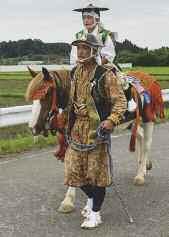
matsuri – traditional Japanese festivals – Nomaoi is an event when family and friends come together For some, it’s also the opportunity to express their passion for horses. “I’ve come from the town of Fukushima, I love horse riding and it’s the first time I will be part of the Nomaoi this year, ” a young woman entrusted with keeping the riders to a walking pace reveals emotionally. Some horses whinny and pull, unnerved by the crowd and the slow pace of the procession In days gone by, horses from Soma were renowned across the whole of Japan, but today another stronger, taller breed is favoured “We had to adapt our horses to the height of Japanese people today Our ancestors were no taller than five foot three!” Kazuhiko explains. He bought his horse 6 months ago, just in time to start its training “The Nomaoi is a special festival You can ’ t take part just because you want to, you need to find the right horse, and it’s not like a car, it requires more than money!” he tells us Unfortunately, as he arrives at the Hibarigahara festival site where the first Nomaoi race
is to take place, Kazuhiko has a bad fall from his horse. He’s taken by ambulance to hospital. The injury is not serious, but the doctor prefers to keep him in for observation Later we head back w i t h o u t h i m t o M i h o s u s h
parents run in Soma, which is a veritable little museum dedicated to the Nomaoi Ichiko, his mother, smiles as she serves tempura and sashimi dishes as we sit on tatami waiting for her son “A few years ago, I started researching my ancestors and where they came from, and I discovered that they were samurai That’s why Kazuhiko decided to enter the Nomaoi You need to wear the samurai insignia of your family to be able to enter, ” she explains as she shows us the Ito coat-of-arms, a gentian flower, in pride-of-place above a display o f
friends. Kazuhiko soon returns with two of his most loyal friends In a gloomy mood after his fall, he eats a little before going upstairs to his apartment to have a rest, and declares he will still enter the big race the next day. His family make no comment Kazuhiko has been training for six months, leaving work after midnight to practise r a c i n
through much worse however. The restaurant, which is also their home, was half destroyed by the earthquake, while Kazuhiko's sister-in-law who’s from Namie - 3 kilometres from the damaged nuclear power plant - is now a refugee. Finally, friend of the family Tadano Aiko, who was a work
sister in the tsunami
For the Ito family, their son entering the Nomoai race for the first time is about safeguarding a tradition There’s only a handful of young riders, including Kazuhiko, among the 500 who take part in this festival, which has been designated as part of Japan’s Important Intangible Folk Heritage
At 10am the next day the Ito family are gathered outside on their parking lot in the scorching summer heat and are hard at work fixing 30kg of armour onto Kazuhiko’s strong frame The equipment is impressive: gauntlets, greaves, cuirass, coat












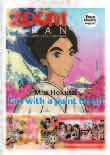
















of chain-mail, leather, wool and silk, all patched up lovingly by his mother. “We bought everything in Kyoto, but it was in such a poor state! Some of these pieces of armour date back to the Momoyama wars before the Edo era!” Ichiko tells us as she ties the white scarf over her son ’ s forehead. “Japanese armour is different from European armour, it doesn’t cover the whole body, only the most sensitive areas, like the heart, neck, and thighs, because the code of honour dictates that you fight face to face, never attack from behind,” adds Kazuhiko All around them, other families are taking part in the same rituals, surrounding their sons, husbands or brothers who will be representing their ancestors today
“There are still a lot of people who use their greatgreat-grand parents ’ armour that they have been lucky enough to keep,” Kazuhiko says as he puts on his helmet made of wild-boar hair and decorated with horns At last he’s ready and, weighted down, he makes his way towards the petrol station that has been transformed into a medieval stable, with horses walking by the petrol pumps and a line of warriors sitting calmly, their sabres – katana – by their sides as they wait for the procession to start It’s 3km to the Hibarigaha festival site where the big race will take place “Careful, stand back!” the loudspeakers call out as the procession approaches The city is now one vast traffic jam, everyone trying to make it to the stadium as quickly as possible. We accompany the Ito family onto the large grassy area in the centre of the stadium, which serves as a backdrop Sitting on the grass, families are just finishing up lunch, huddling as best they can under parasols while some of the riders smoke a cigarette before the race The thousands of spectators sitting all around us in the stadium are all wearing hats to protect them from the sun “Don’t forget to drink! Don’t forget to drink!” the speakers declare Soon people on the steps start to call out to the first riders of the race with all the force the Japanese language can muster. Advancing two by two, the samurai try to keep their neighing mounts in check as best they can as the starting pistol is fired They have a thousand metres

to cover, quite a long distance if you consider the blazing July heat with temperatures close to 45°C. A horse suddenly becomes faint and almost keels over as it is taken to the caravan that serves as a first aid station A woman dabs his forehead with ice while two elderly men force him to swallow salt. “It’s to make him drink! Horses can die from sunstroke in this terrible heat!” one of them tells us
The festival was traditionally held on the 25th, 26th and 27th of May before it was brought forward gradually to the end of July “In the past, we were all farmers and the festival respected the Shinto calendar for rice planting Nowadays, most of us are ordinary company employees and have slowly abandoned the religious aspect of the Nomaoi, so it’s become a summer weekend event, ” an old man explains Every year, some horses die from the heat, but there’s no doubt that the date being set in the summer means the Nomaoi attracts more tourists This is an economic advantage that has a major impact, claims Takahashi Makoto. He explains that with the help of the new motorway linking the city of Iwaki to Soma, the Nomaoi can welcome up to 210,000 visitors from across the whole of Japan

The race is coming to an end and, far off on the race course, Kazuhiko is turning his horse as if he’s reining it in He hasn’t won this race, but there is still one last competition, and it's the most important: the Hatatori Forty flags have to be caught from the air while racing at top speed. With the sound of crackling fireworks, the flags are shot skywards one by one, followed by forty samurai racing to catch one All of a sudden, the samurai are no longer solemn and calm, but a horde of warriors shouting and cursing each other, ready to grab and push each other as the flags fly through the air As the conch sounds for the last time, marking the end of the festival, Kazuhiko throws himself into the fray and catches a flag at the last moment Joyfully, he heads to the grandstand to receive the judges’ congratulations But for him, nothing is worth more than what he holds in his hands. “This is the most beautiful gift I could give to my wife, who’s expecting, and to my ancestors I am the youngest in the history of my family to have caught a flag!” he exclaims as he holds close the flag from Nakamura Shrine, from his beloved city of Soma ALISSA DESCOTES-TOYOSAKI




















































